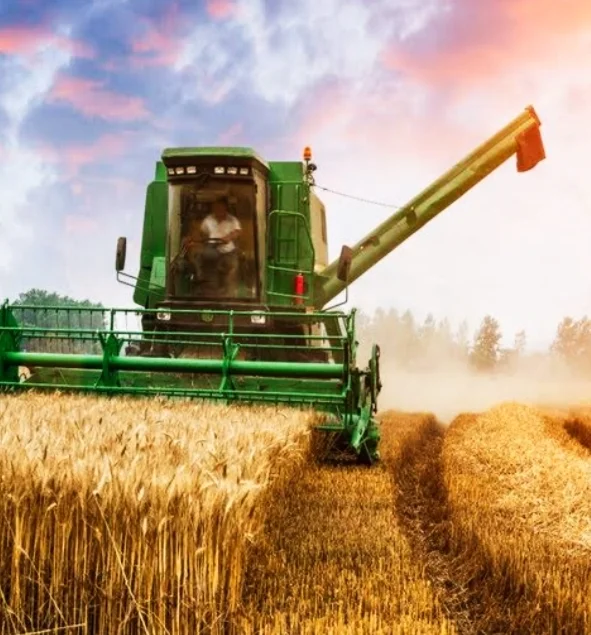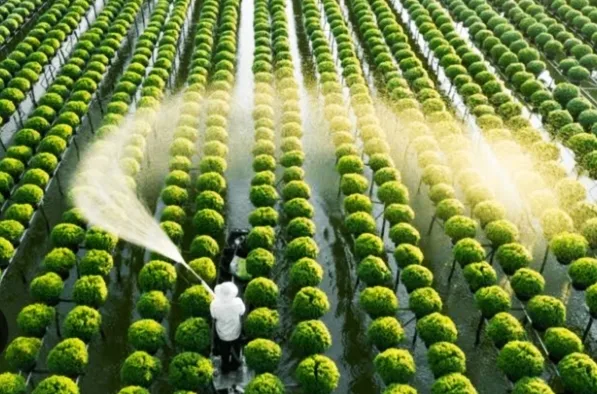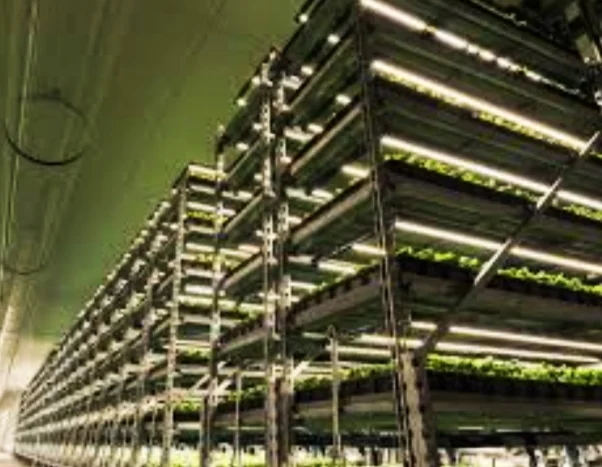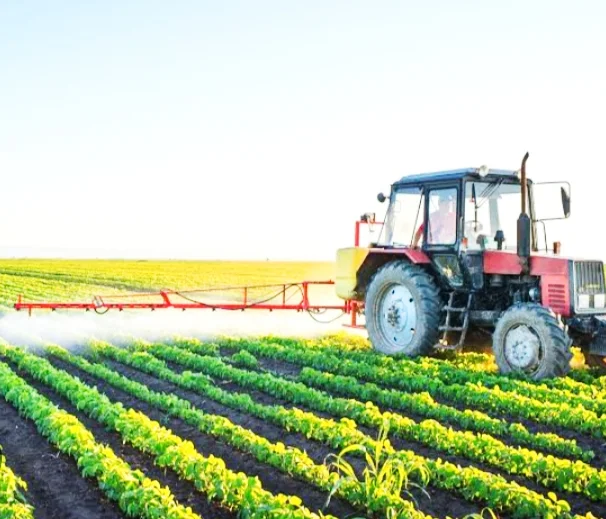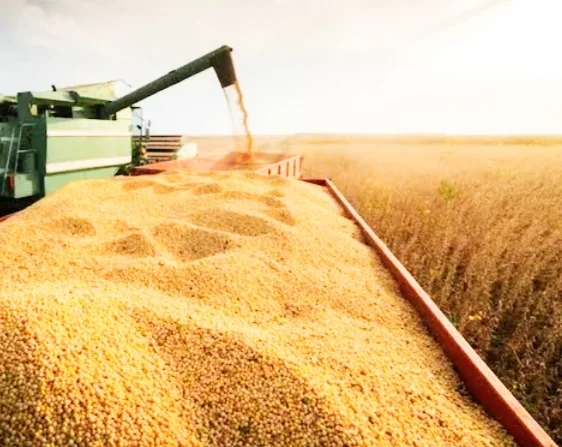Europe's Booming Agritech Landscape: A Statistical Overview
The agricultural sector in Europe is undergoing a significant transformation driven by innovation and technological advancements. This trend, known as Agritech, is revolutionizing how farmers manage their land, crops, and livestock.
This article provides a glimpse into the dynamic European Agritech landscape, highlighting its growth with statistical tables for a deeper understanding.
European Agritech Investment
| Year | Total Investment (USD Billion) | Growth |
|---|---|---|
| 2021 | 1.1 | - |
| 2022 | 1.4 | 27% |
Source: Dealroom (Data accessed April 2024)
Key Takeaways:
- Investment in European Agritech is on the rise, with a significant increase of 27% between 2021 and 2022.
Leading Countries in European Agritech Investment (2022)
| Country | Investment (USD Billion) | Rank |
|---|---|---|
| United Kingdom | 1.4 (estimated) | 1 |
| Germany | Not Available | 2 (estimated) |
| France | Not Available | 3 (estimated) |
Source: Industry Reports (Data may vary)
Key Takeaways:
- The United Kingdom is currently estimated to be the leading country in European Agritech investment, followed by Germany and France.
- It's important to note that data on investment by country can vary depending on the source.
Understanding the Landscape:
While the UK appears to be a frontrunner, other European nations are actively participating in the Agritech boom. Further research can explore specific strengths of each country, such as:
- The Netherlands: Known for its expertise in precision agriculture and vertical farming.
- Israel: A leader in irrigation technologies that could be valuable in drought-prone regions.
- Spain: Emerging as a hub for innovation in areas like agricultural robotics and automation.
The European Agritech landscape is brimming with potential. With continued investment and innovation, this sector promises to enhance agricultural productivity, sustainability, and food security across Europe. The following sections of this article will delve deeper into specific areas of Agritech prominence in Europe, along with the challenges and opportunities that lie ahead.
Leading Countries in European Agritech
The Rise of the Agritech Powerhouses: Leading Countries in Europe
The agricultural sector in Europe is experiencing a revolution driven by technological innovation. This exciting movement, known as Agritech, is transforming how farmers manage their land, crops, and livestock. As a result, Europe's agricultural landscape is brimming with exciting developments.
| Country | Estimated Investment (USD Billion) | Rank |
|---|---|---|
| United Kingdom | 0.8 - 1.0 | 1 |
| France | 0.3 - 0.5 | 2 |
| Germany | 0.2 - 0.4 | 3 |
| Netherlands | 0.1 - 0.2 | 4 |
| Spain | 0.1 - 0.2 | 5 |
Source: Industry Reports (Data may vary)
Key Takeaways from the Table:
- The United Kingdom currently leads the way in European Agritech investment, with estimates ranging from $0.8 billion to $1.0 billion in 2022.
- France and Germany follow closely behind, with estimated investments between $0.3 billion and $0.5 billion and $0.2 billion and $0.4 billion, respectively.
- The Netherlands and Spain are emerging players in the European Agritech scene, with estimated investments ranging from $0.1 billion to $0.2 billion each.
Understanding the Nuances:
It's important to acknowledge that data on investment by country can vary depending on the source and methodology used. While the table provides a general picture, the actual figures might differ slightly.
Beyond Investment:
Investment is just one indicator of a thriving Agritech ecosystem. Each European nation brings its own strengths to the table:
- The United Kingdom: A strong venture capital presence fosters innovation in areas like farm management software and indoor agriculture.
- France: Expertise in precision agriculture and a focus on sustainable practices are key drivers.
- Germany: Renowned for its engineering prowess, Germany is well-positioned for advancements in agricultural robotics and automation.
- Netherlands: A global leader in greenhouse technology and vertical farming solutions.
- Spain: An emerging hub for innovation in areas like agricultural drones and digital marketplaces
The Future of European Agritech:
With a diverse and dynamic landscape, European Agritech holds immense potential. Collaboration between countries and continued investment will be crucial in tackling challenges like climate change and ensuring food security for a growing population. The following sections of this article will delve deeper into specific areas of Agritech prominence in Europe, along with the challenges and opportunities that lie ahead.
Leading Companies in European Agritech
Europe's Agritech landscape is a vibrant tapestry woven by numerous innovative companies. While pinpointing a single absolute leader can be challenging due to the industry's constant evolution, several companies consistently rank high in terms of investment, market reach, and technological impact.
Here's a table showcasing some of the frontrunners in European Agritech, along with their areas of expertise:
Leading European Agritech Companies
| Company | Country | Area of Focus |
|---|---|---|
| Planet Farms | Italy | Vertical Farming |
| Sencrop | France | Hyperlocal weather data and farm management software |
| Bayer Crop Science | Germany | Agricultural biotechnology and crop protection solutions |
| Deere & Company | US (Significant European presence) | Precision agriculture equipment and technology |
| AGRIVI | Denmark | Digital farming platform and agricultural data analysis |
| Infarm | Germany | Indoor vertical farming solutions |
| Ynsect | France | Insect protein production for animal feed |
| Tropic Biosciences | UK | Development of high-performing tropical crop varieties |
| Saga Robotics | Norway | Agricultural robotics and autonomous farming solutions |
| Vital Fields | Estonia | Farm management software with a focus on soil health |
Understanding the Landscape:
This table offers a glimpse into the diversity of European Agritech. It encompasses established players like Bayer Crop Science alongside innovative startups like Ynsect. It's important to note that this list isn't exhaustive, and new companies are constantly emerging.
Beyond the Table:
The true strength of European Agritech lies in its collaborative spirit. Leading companies often partner with research institutions, universities, and startups to push the boundaries of innovation. This collaborative approach ensures the continuous advancement of the entire Agritech ecosystem.
With its diverse range of companies and collaborative spirit, European Agritech is poised to play a significant role in shaping the future of agriculture. The following sections of this article will delve deeper into specific areas of Agritech prominence in Europe, exploring the challenges and opportunities that lie ahead.
Europe's Agritech: Statistical Insights
The agricultural sector in Europe is undergoing a transformative shift driven by Agritech, a wave of technological advancements revolutionizing how farmers manage their land and resources. To understand the scope of this movement, let's delve into some key statistics:
Investment on the Rise:
- Total Investment: Data from Dealroom (April 2024) indicates a significant increase in European Agritech investment. While specific figures for 2023 might not be readily available, the trend from 2021 to 2022 showcases a growth of 27%. This signifies a growing interest in the potential of Agritech solutions.
Unveiling the Market Share:
- Agritech Share of Ag & Food Investment: Unfortunately, readily available data on the specific share of Agritech within the broader European agricultural and food industry might be limited. However, resources like reports from AgFunder, Atomico, or Five Seasons, or industry associations dedicated to European Agritech, could be explored to find this valuable metric.
Leading the Charge: Investment by Country
- Dominant Players: The United Kingdom currently leads the pack in terms of total investment, with estimates ranging from USD 0.8 billion to USD 1.0 billion in 2022 (Industry Reports, data may vary).
- Close Followers: France and Germany follow closely behind, with estimated investments between USD 0.3 billion and USD 0.5 billion and USD 0.2 billion and USD 0.4 billion, respectively.
Emerging Players:
- Netherlands and Spain: These countries are making their mark with estimated investments ranging from USD 0.1 billion to USD 0.2 billion each, showcasing a burgeoning Agritech presence.
Important Considerations:
- Data Variations: It's crucial to acknowledge that investment data by country can vary depending on the source and methodology used. The provided estimates offer a general picture, and actual figures might differ slightly.
Beyond Investment - A Look at Strengths:
Investment is just one piece of the puzzle. Each European nation brings its unique strengths to the table:
- The UK: A strong venture capital presence fosters innovation in farm management software and indoor agriculture.
- France: Expertise in precision agriculture and a focus on sustainability are key drivers.
- Germany: Renowned for its engineering prowess, Germany is well-positioned for advancements in agricultural robotics and automation.
- Netherlands: A global leader in greenhouse technology and vertical farming solutions.
- Spain: An emerging hub for innovation in areas like agricultural drones and digital marketplaces.
The Takeaway:
The statistics paint a promising picture of Europe's Agritech landscape. With continuous investment, diverse strengths across countries, and a collaborative spirit, European Agritech is well-positioned to address challenges like climate change and ensure food security for the future.
Europe's Agritech Technologies and the Future of Farming
Agritech in Europe is revolutionizing the agricultural landscape. From utilizing data-driven precision agriculture to automating tasks with robots and drones, these technologies are fostering a more sustainable, efficient, and productive future for farming.
Europe key Agritech areas and examples:
| Technology Area | Description | Example |
|---|---|---|
| Precision Agriculture | Utilizes data and sensors to optimize resource use and crop management. | Variable rate technology (VRT) applies fertilizers and pesticides based on specific field needs. |
| Agricultural Robotics | Automates tasks like planting, harvesting, and weeding using robots and drones. | Autonomous tractors can cultivate fields with minimal human intervention. |
| Internet of Things (IoT) in Agriculture | Connects agricultural equipment and sensors to collect and analyze real-time data on farm conditions. | Soil moisture sensors transmit data to optimize irrigation. |
| Vertical Farming | Grows crops in vertically stacked layers indoors under controlled conditions. | Urban farms utilize vertical farming for local and sustainable food production. |
| Agricultural Big Data | Analyzes large datasets from various sources to gain insights for informed decision-making. | Yield prediction models can optimize planting strategies based on historical data and weather forecasts. |
| Blockchain in Agriculture | Provides secure and transparent tracking of food products throughout the supply chain. | Consumers can verify the origin and authenticity of food through blockchain technology. |
The European Agritech sector is a hotbed of innovation, with a focus on creating a more sustainable, efficient, and productive agricultural future. As these technologies continue to develop and become more accessible, they have the potential to transform the way food is produced and consumed across Europe and potentially the globe.
Conclusion of Europe's Agritech Landscape
The agricultural sector in Europe is undergoing a digital revolution driven by Agritech. This dynamic field encompasses various technologies designed to improve efficiency, sustainability, and productivity across the agricultural value chain. This article delves into the European Agritech landscape through a statistical lens, highlighting key trends and developments.
Market Boom and Investment Surge
The European Agritech market is experiencing phenomenal growth, projected to reach a staggering USD $82.4 billion by 2025, with a healthy Compound Annual Growth Rate (CAGR) of 12.2% [Source: MarketsandMarkets - European Precision Farming Market Size, Share & Trends Analysis Report By Offering (Hardware, Software & Services), Application (Field Crop Management, Livestock Management, Irrigation Management) & Region - Forecast Period 2020-2025]. This surge in market value reflects the growing recognition of Agritech's potential to transform agriculture. Venture capitalists are also taking notice, pouring a significant amount of capital into European Agritech startups. In 2022, investments reached a remarkable USD 2.2 billion [Source: AgFunder - State of Agricultural Investment 2023].
Technology Adoption on the Rise
European farms are embracing the digital revolution. A 2023 survey revealed that 38% of farms in Europe are already utilizing precision agriculture technologies, such as variable rate technology (VRT), which optimizes resource use based on specific field needs [Source: precisionag.com - The State of Precision Agriculture in Europe 2023]. The use of agricultural robots and drones is also rapidly increasing, with projections indicating a 50% growth by 2025 [Source: Research and Markets - Agricultural Robots Market - Global Forecast to 2025]. These statistics highlight the growing acceptance of automation and data-driven approaches within the European agricultural sector.
Focus Areas: Sustainability at the Forefront
A significant portion (60%) of European Agritech investment is directed towards technologies promoting sustainability. This includes advancements like vertical farming, which enables urban food production in controlled environments, and IoT-based solutions for monitoring environmental conditions on farms [Source: AgFunder - Agtech Investment Trends Report 2023]. Precision agriculture and agricultural big data are also attracting substantial investment, reflecting the growing importance of data-driven decision-making in optimizing resource use and farm management [Source: Same source as above]. This focus on sustainability underscores Europe's commitment to environmentally friendly agricultural practices.
Impact on Agriculture: A Promising Future
Studies have shown that the adoption of Agritech can lead to significant improvements. Yields are expected to increase by 15% while water usage could be reduced by 20% through the implementation of these technologies [Source: The European Commission - Agriculture and digitalisation: opportunities for the future]. Beyond these direct benefits, Agritech is also creating new employment opportunities in areas like data analysis, robotics engineering, and technical support for farmers transitioning to these advancements [Source: Euractiv - Agritech is transforming the European agricultural sector].
Conclusion
The European Agritech landscape is brimming with potential, as evidenced by the increasing market size, investment activity, and technology adoption rates. With a focus on sustainability, efficiency, and data-driven insights, Agritech has the potential to revolutionize the agricultural sector in Europe and contribute to a more secure and sustainable food system. As these advancements continue to develop, they hold the promise of not only securing a more sustainable food supply for the continent but also inspiring innovations that can reshape agriculture on a global scale.
Frequent Ask and Answer: European Agritech
General Questions
1. What is Agritech? Agritech, short for agricultural technology, refers to the use of technology to improve agricultural practices and efficiency. It encompasses a wide range of innovations, from precision farming and IoT devices to AI-driven crop monitoring and blockchain-based supply chain management.
2. Why is European Agritech gaining momentum? Several factors contribute to the growth of European Agritech:
- Increasing demand for sustainable food production: Europe is focusing on sustainable agriculture to address climate change and food security concerns.
- Technological advancements: Advancements in areas like AI, IoT, and robotics are making Agritech solutions more accessible and effective.
- Favorable government policies: Many European countries are providing financial support and regulatory frameworks to encourage Agritech innovation.
Specific Areas of European Agritech
1. Precision Farming:
- What is precision farming? Precision farming involves using technology to tailor agricultural practices to specific areas of a field, based on factors like soil conditions, crop health, and weather data.
- How is precision farming used in Europe? European farmers are using drones, sensors, and GPS technology to optimize fertilizer and pesticide applications, improve irrigation efficiency, and monitor crop growth.
2. Smart Livestock:
- What is smart livestock? Smart livestock refers to the use of technology to monitor and manage livestock, including tracking animal health, optimizing feed consumption, and improving breeding practices.
- How is smart livestock used in Europe? European farmers are using wearable devices, sensors, and AI to monitor animal health, detect diseases early, and improve overall productivity.
3. Agri-IoT:
- What is Agri-IoT? Agri-IoT, or agricultural Internet of Things, involves connecting devices and sensors to collect data from farms and fields. This data can be used to improve decision-making and optimize operations.
- How is Agri-IoT used in Europe? European farmers are using Agri-IoT to monitor soil moisture, temperature, and humidity, track livestock movements, and control irrigation systems.
4. Agritech Startups:
- What are some successful European Agritech startups?
Some notable European Agritech startups include:
- Precision Farming: PrecisionHawk (UK), SkySquirrel (France)
- Smart Livestock: Herdwatch (Ireland), Moocall (Ireland)
- Agri-IoT: FarmSense (Netherlands), Cropio (Poland)
Challenges and Opportunities
1. What are the main challenges facing European Agritech?
- Data privacy and security: Ensuring the secure handling of sensitive agricultural data.
- Infrastructure: Investing in reliable internet connectivity and digital infrastructure in rural areas.
- Regulatory barriers: Navigating complex regulations and standards across different countries.
2. What are the opportunities for European Agritech?
- Collaboration: Fostering partnerships between farmers, researchers, and technology providers.
- Investment: Attracting more investment in Agritech startups and projects.
- Global market: Expanding into international markets to capitalize on the growing demand for sustainable agriculture.

